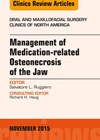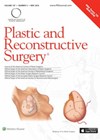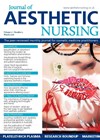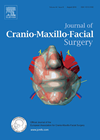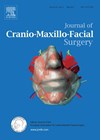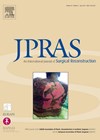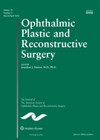
Journal Reviews archive for August 2016
Diagnosis of osteonecrosis of the jaw
Although the management of medical relation osteonecrosis of the jaw is usually provided by colleagues in maxillofacial surgery, it is essential for ENT surgeons to effectively diagnose the various presentations of this condition. Affected bone that is exposed and necrotic...
How to decrease postoperative swelling in rhinoplasty
Postoperative bruising and facial swelling is one of the main concerns of rhinoplasty patients. There is sustained controversy on the surgical manoeuvres, medication and postoperative measures to reduce it, and many published papers address this topic. The authors of this...
Age-related changes in the menopausal woman
The author explores the aesthetic impact of hormonal ageing during the perimenopausal, menopausal and postmenopausal periods. The author explains that oestrogen levels can impact upon several skin functions, including: excessive hair growth, pigmentation, vascularity, elasticity and water-holding capacity. A detailed...
Hot or cold?
The authors present a retrospective literature review of non-surgical body contouring technologies, including radiofrequency, low-level laser therapy, cryolipolysis, as well as thermal and non-thermal ultrasound. A useful, referenced statistical table is provided for comparison of abdominal circumference reduction among different...
Upper facial rejuvenation
The author provides a comprehensive overview of a variety of considerations for clinicians to consider when assessing the upper third of the face, through discussion of anatomy, the importance of treatment planning, symptoms of complications, as well as treatment strategies....
Vulvar rejuvenation
The author explores the concept of vulvar rejuvenation; an increasingly popular area of treatment within the non-surgical aesthetic sector, describing a number of clinical presentations and treatment modalities. Equally, the author acknowledges that surgical vaginal rejuvenation procedures are well established...
CAD/CAM assisted mandibular reconstruction free hand: is there a difference?
The gold standard for the reconstruction of the mandible is a free bony flap, the fibula is commonly used. The fibula is a straight bone and indeed all the other donor sites present various other considerations and difficulties, to allow...
A modification of the crescentic flap for nasal skin reconstruction
Non melanoma skin cancers are the most frequent malignant skin tumours and in over 25% of cases affect the nose. Following excision, the reconstruction can be challenging. The nasal complex has adjacent concave and convex surfaces, minimal laxity and nasal...
Assessment of septal deviation in septorhinoplasty
A variety of methods exist to assess the nasal septum, often dependent of the healthcare resources available, and whether there is a specific pathology affecting the function of the nose. The authors present a small series of patients presenting with...
What is the best graft for nose surgery in the long-term?
The authors of this paper performed an experimental study on long-term histological changes in different grafts implanted subcutaneously in 25 New Zealand white rabbits. Ear cartilage, rib cartilage, autologous fascia, fascia allograft, diced rib and ear cartilage wrapped in autologous...
Lacrimal gland carcinoma
This is a major review of the management of lacrimal gland carcinoma, focusing mainly on adenoid cystic carcinoma. Relevant literature published in English since 1970 was included amounting to some 40 articles after filtering. Overall mortality for all lacrimal gland...
Lateral canthal position after lateral orbitotomy
This is a retrospective photographic study of changes in the lateral canthal position following a lateral orbitotomy performed via a lateral canthotomy and cantholysis of both upper and lower limbs of the lateral canthal tendon. Reconstruction of the lateral canthus...

